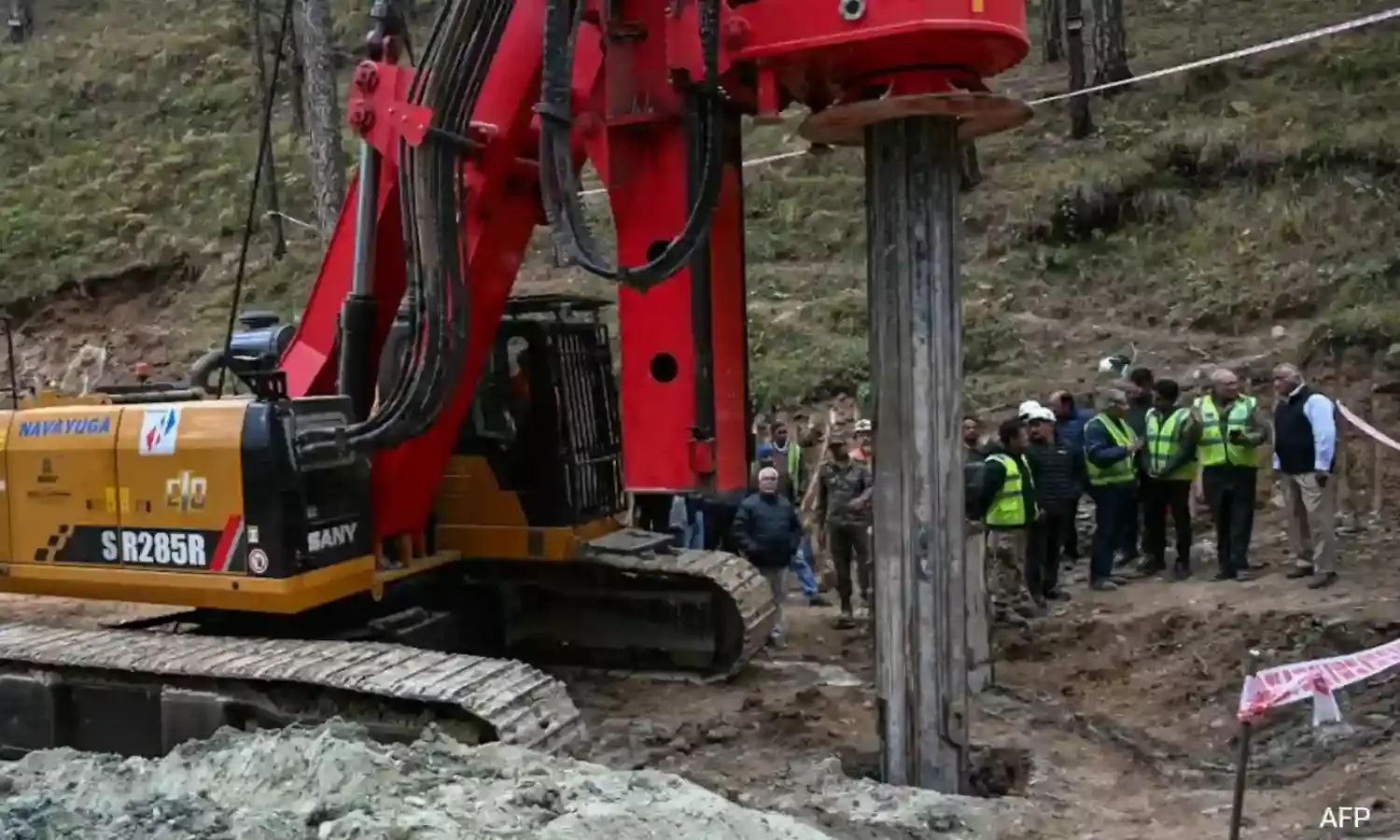Endangered Hills - Army Joins Rescue Efforts
Silkyari Tunnel Collapse

On the 15th day since the Silkyari Tunnel collapsed in Uttarkashi, the news is that the Army has been called to join in the rescue. The good news is that all 41 trapped workers are reported safe and a landline has reached them.
A post on ‘X’ said that the Madras Sappers of the Indian Army have started manually “Chuha Boring” to cut through and reach the trapped. The AmericanAugur drilling machine broke into pieces. The post also says that there are negligible or very little chances of vertical drilling because of post effect collapse, but this is not ruled out.
Questions are being asked whether the foreign expert called in had no reserve equipment and was he just flown in without detailing what he would encounter?
While the nation prays for the safe rescue of the trapped, prayers also in order that no soldier gets injured or worse gets disabled in the rescue. Because, in such eventuality he will be simply boarded out without any disability pension. Moreover, if God forbid he dies, the widow will be running from pillar to post for pension with scores of hurdles posed by SPARSH.
As the saying goes, “God and Soldier, we adore in time of danger, not before. The danger passed, and all things righted, God is forgotten and the soldier slighted”.
The railway tunnel in Shimla built during the British period has not caved in yet but the major issue today is are we taking into account the dangerous instability of the sedimentary new-fold mountains all along our Himalayan chain or have we become so naïve to think we can fight nature and the “mountains”?
The ‘Char Dham Yatra’ connecting Gangotri, Yamunotri, Badrinath, and Kedarnath, Prime Minister Narendra Modi’s Rs 11,700 crore flagship project, no doubt is excellent by way of religious tourism (with the highway also going beyond to Hemkund Sahib), plus earning revenue in the concerned locations.
Commissioning the 900-km Char Dham highway development project in Dehradun in December 2014, Prime Minister Modi had dubbed it as “a tribute to all those who had been killed in the 2013 Kedarnath tragedy.”
With a death toll of over 6,000, the 2013 floods in Uttarakhand were described as one of India’s worst natural disasters. However, Prem Bahukhabdi, Dehradun-based researcher of Himalayan ecology, writes in’ Policy Circle’, that geologists and scientists believe the Char Dham project will plague Uttarakhand for the next four decades causing ill-effects like landslides, avalanches, flash floods, and cloud bursts.
The rationale of widening the old road for the Char Dham Highway vis-à-vis constructing another parallel road 40-50 km away to cater for war and disaster war was the question. The new route could bring prosperity to the state by developing new commercial centres, giving access to remote areas, creating new tourist destinations, and providing an alternative way in case of war and natural calamity.
Environmentalists challenged the Char Dham project in the Supreme Court but the government response was that the Army needs a 12-metre road. The Army was already using the old road but political expediency required the Char Dham Yatra Project to be completed at the earliest. Constructed at breakneck speed, PM Modi inaugurated the completed 900-km Char Dham highway project on December 27, 2016.
Earlier, the Supreme Court had pointed out that debris generated during road construction and dam construction had multiplied the damage caused by the flash floods in the 2013 Kedarnath disaster.
Environmentalists countered the government’s claim of only axing 56,000 trees in the Char Dham highway project since massive losses in vines, shrubs, and vegetation also loosened the soil. According to a PIL filed in the Uttarakhand High Court, the debris collected during road construction has been dumped in the rivers in an unscientific manner.
It may be recalled that in August 2020, the road was damaged by rain water at more than 100 places in Uttarakhand. In October 2021, the disaster in Champawat took 52 lives and swept away property worth millions of rupees.
On February 7, 2021, water level in the Dhauli Ganga River in Joshimath broke all records, sweeping away 300 people and destroying millions worth of property. The glacial outburst triggered an avalanche and deluge in the Alaknanda River system.
In May 2022, thousands of passengers were trapped with falling stones and debris in many places on the Char Dham route. Joshimath is sinking at a fast pace.
The Char Dham project is done and dusted and the only thing left is to prepare ourselves as best as we can to cope with the inevitable wrath of nature, which may continue over the next four decades according to geologists and scientists; paying for the human or rather political arrogance shown to the mighty Himalayas.
The National Disaster Management Authority (NDMA), was established under the Disaster Management Act of 2005 (DM Act of 2005), which is chaired by the Prime Minister. The NDMA is responsible for laying down the policies, plans and guidelines for disaster management for ensuring timely and effective response to disasters in the country.
With such a high powered 18-year old NDMA and a host of advisers (mostly political appointees), there is no reason we needed to look beyond the National Disaster Response Force (NDRF) for the Silkyari tunnel rescue.
Finally, we need an urgent holistic assessment of future such disasters, which may be in multiples, and speedily prepare and equip ourselves to combat them rather than passing them off as Karma and playing the rhetoric that these are God’s will.
Lt General PRAKASH KATOCH is a veteran of the Indian Army. Views expressed are the writer’s own.



